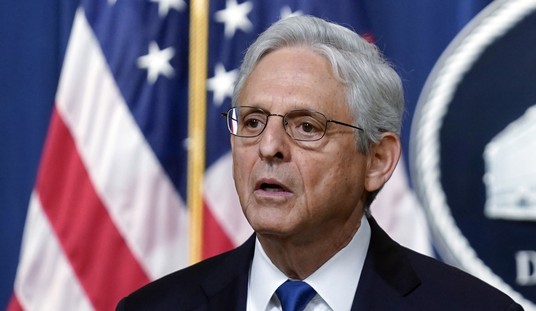Note: Most Thursdays, I take readers on a deep dive into a topic I hope you'll find interesting, important, or at least amusing. These essays are made possible by — and are exclusive to — our VIP supporters. If you'd like to join us, take advantage of our 74% off promotion.
“I beat the Russians every time, but they just don’t know when they’re defeated.” —Napoleon Bonaparte
The war on Russian oil just went global, and the question now might not be whether President Donald Trump's new sanctions will work, but whether they'll work fast enough to matter.
Since we first discussed Ukraine's war on Russian energy production back in August with what some call "kinetic sanctions" on refineries, depots, and export facilities, Trump launched a new and serious round of traditional sanctions on Russia's ability to sell crude oil and refined products.
How's it going? As your neighbors with marital troubles say on Facebook, "It's complicated."
The Telegraph's Mark Brolin last week wrote that "Putin is losing the weirdest war in 150 years," but while things are certainly weird — absurdity is one of warfare's few constants — "losing" takes things far too far. Still, as Trump's new sanctions begin to bite, "Moscow has been losing its Western oil markets, while its supposedly mighty army has only managed to gain control of a fraction of Ukrainian territory."
Trump's sanctions, announced two weeks ago, were quite the turnaround from his previous (and much more lenient) policy toward Russia. Targeted at Rosneft and Lukoil — the country's two largest oil firms and accounting for roughly half of Russia's oil exports — the new measures freeze their assets in the US, and also punish "their customers in India and China with retaliation that could include being sanctioned themselves," as ABC News put it.
Russia earned 30–50% of its revenue from oil and energy products over the last decade, leading some — OK, one of them was me — to tease that Russia is little more than a gas station with nukes.
More difficult to reach with sanctions is Moscow's shadow fleet of something like 1,100 to 1,400 illegal oil tankers. Sanctions are starting to bite, however:
Russian exporters continued filling tankers at port terminals, yet refiners in India, China, and Türkiye—buyers representing more than 95% of Moscow’s seaborne crude exports—increasingly refused to accept deliveries. The result: 380 million barrels are now floating at sea, up 27 million barrels or 8% since early September, Bloomberg reported.
The result is that "Russia’s seaborne crude shipments crashed to 3.58 million barrels per day in the four weeks ending 2 November, down 190,000 barrels from the previous period."
So Russia has workarounds in place (especially via the shadow fleet), making these sanctions a “welcome warning shot,” as former US diplomat and Atlantic Council member Daniel Fried put it. They are not, however, likely to collapse Russia’s oil export machine any time soon.
Now let's take a glance at Kyiv's ongoing kinetic sanctions.
I bookmarked so many X posts that they all just became a blur after a while, so I'll just show you a small sample, starting with this overview of the current situation.
🔥Two major sites down overnight: Nizhny Novgorod refinery & Sterlitamak
— 𝐀𝐧𝐧𝐚 𝐊𝐎𝐌𝐒𝐀 | 🇪🇺🇫🇷🇵🇱🇺🇦 (@tweet4Anna_NAFO) November 4, 2025
Moscow faces a mounting export squeeze:
• 18M tons/yr capacity offline
• 380M barrels of Russian oil now idle at sea
• Tanker volumes up 8% since Sept; daily loadings at 10-week low
2/3 pic.twitter.com/rO0LNqLZk2
This next kinetic sanction is too recent to know how badly it might play out for Russia, but at this time it does look like a significant hit.
Ukraine has just taken out a whole Russian port, one of Russia's busiest oil export centers, 100% out of commission. https://t.co/GT2f4QKxTh
— Jay in Kyiv (@JayinKyiv) November 5, 2025
Last one:
Ukraine’s drone strikes have triggered Russia’s worst refinery disruption yet, knocking 38% of capacity offline. Gasoline output fell by 1M tons in September, creating a 20% shortage at home. An economist told RBC, “Russian oil companies can do little to ease the crisis,” with… https://t.co/8cPad51Vcr
— Polymarket Intel (@PolymarketIntel) October 1, 2025
Russia still refines yuge volumes of oil, but Ukrainian strikes reduced output by anywhere from 10-17% since the War Against Oil really got going in July. There are credible estimates claiming temporary disruptions of up to 30%. The full recovery to pre-attack levels is unlikely until mid-2026 at best, according to the International Energy Agency. I read the IEA report and it was never quite clear whether the recovery required Ukraine to cease and desist with the kinetic sanctions.
Result? Russian vassal Belarus quadrupled gasoline exports to Russia in October, which is a bit like Kuwait suddenly buying out all the premium unleaded from a Shell station in Vermont. The numbers aren't huge, but they are weird. And it's never pleasant when a source of income suddenly becomes an expense.
The downstream effects are where things get tricky.
The oil industry — from drilling to refining to selling — is expensive as hell, and therefore doesn't have huge amounts of slack. A sudden reduction in refinery capacity or the loss of an export facility means there are fewer places for all that oil coming out of the ground to go. Same thing for shadow fleet tankers needing extra days or weeks to sell their stores. Pretty quickly, you have to cap some wells and reduce the flow.
A temporarily "shut-in" well can be restarted quickly and without much expense, although sanctions make it a bit more expensive and perhaps a bit more time-consuming, too. When wells sit capped for months, restarting them requires costly "workover" operations.
The longer a well sits idle, the more it deteriorates — inaccessible parts corrode, reservoir pressure drops, paraffin and hydrates clog flow paths. And sanctions slow repairs while increasing costs, because US and EU firms dominate the field. Some Western firms cheat, sure, but they charge extra for the privilege.
It's a bit like Lucy and Ethel in that chocolate factory: Once you start to fall behind, the complications stack up quickly. The difference is that, unlike tasty chocolates, there's no temporary relief to be had from shoving barrels of oil in your mouth. At least I wouldn't recommend it.
And Another Thing: Kyiv also applied kinetic sanctions to Russia's electrical grid, causing blackouts from Belgorod to Moscow. Moscow’s been hammering Ukraine’s grid every winter since 2022, but to little effect on the country's willingness or ability to continue fighting. For both sides, these seem to be largely nuisance operations.
Whatever the oil production/refining/exporting situation actually is, it has yet to impact events on the battlefield. There might be some small amount of schadenfreude to be had, watching hapless Russians like up for gasoline like Americans had to during Jimmy Carter's malaise years, but there's plenty of oil and energy for the Russian military.
So let's look at the fighting.
The latest news is that Russia is about to fully capture the city of Pokrovsk — "a gateway to the Donetsk region," as the New York Times put it on Thursday, and "its biggest capture of a Ukrainian city since 2023."
Sounds like a big deal... maybe yes, maybe not so much.
For perspective, Russia's biggest win in more than two years is a plodding conclusion to an 18-month fight over city with a prewar population of about 60,000 people. In other words, Pokrovsk wasn't much to begin with, and there are believed to be just 1,500 civilians remaining. Whatever economic value Pokrovsk had before the war is long since destroyed.
My takeaway from all this is that after months of heavy fighting and severe losses, Russia is finally on the cusp of capturing the gateway to the rest of the Donetsk Oblast — which has been a war aim since 2014.
Neither side produces reliable casualty figures, but here are open source estimates of Russian losses at Pokrovsk since mid-2024:
- Ukrainian General Staff & Zelensky: ~200,000 in Donetsk Oblast (mostly Pokrovsk/Kupyansk) since Jan 2025; Pokrovsk-specific ~120,000 for the year-long push.
- ISW & OSINT: 45,000 in first 3 months of 2025 alone; monthly rate 30,000–50,000 amid failed assaults.
- Leaked Russian docs (via Ukrainian intel): 281,550 nationwide in first 8 months of 2025, with Pokrovsk as top casualty sector (40-50% of Donetsk losses).
- Mediazona/BBC: ~220,000–318,000 KIA nationwide by Oct 2025; Pokrovsk accounts for ~15-20% of confirmed deaths via obituaries/social media. Recent spikes: 1,500+ KIA in one SBU operation (Nov 5); 1,200 in a single counterattack (Nov 1).
I included Kyiv's figures for completeness, but always take them with an entire salt lick. And while I ignore ISW's analysis and recommendations, their reporting is all open-sourced and as rock-solid as you'll find. Ukraine's losses are estimated at roughly one-third to one-half of Russia's, which is in line with what history teaches us to expect from well-prepared defenders.
NATO estimates that Russia's war dead total more than 100,000 just this year, and with two more months of fighting to go.
For even more perspective, imagine if it had taken US forces a year and a half to take Fallujah in Iraq, while losing more men in that single battle than we lost in Vietnam and Korea, combined — from a population less than half the size of ours.
So losing Pokrovsk is a big deal, since what lies beyond it is harder to defend. But it's a victory tempered by almost unimaginable losses and the knowledge that Ukraine has had 18 months to prepare defenses west of the city. If anyone thought that taking Pokrovsk would bring back fast-moving maneuver warfare, think again.
Back to the economic front.
Stagflation isn't supposed to happen, but a studiously determined leader can bring it on. Before Nixon took us off the gold standard, economists thought stagflation was impossible — inflation was supposed to mean an overheating economy, not a stagnant one. But two weeks ago, one of Russia's top bankers warned that "We've been so focused on fighting inflation lately that we've somewhat forgotten about economic growth."
With inflation approaching 10% again and economic growth at an anemic 1.4% (and that's if you believe the Kremlin's official figures), stagflation has come to Russia.
And Another Thing: In one of his final interviews, Nixon predicted that post-Soviet Russia might prove more reckless and dangerous than the Soviet Union was. What do you think, is that worth an essay one of these weeks?
I should also note that since at least 2023, literally all of Russia's economic growth is due to war spending. Already, the country's National Wealth Fund (NWF) has been drained of its most liquid assets, dropping "by about two-thirds to just $39 billion from $112.7 billion before the Ukraine conflict," according to Russian Finance Minister Anton Siluanov earlier this year.
The NWF is Moscow's main source of financing for Russia's wartime deficits.
While the war consumes tanks, the civilian economy is tanked.
Then there's the manpower front.
“Against each division we destroyed, the Soviets brought up another. Their reserves seemed inexhaustible," German Field Marshall Erich von Manstein wrote in his 1955 memoir, Lost Victories. When you think "Russia" and "war," you think "endless manpower."
When you aren't thinking "brutal winters," that is.
Well, that was then. On the home front, keeping half a million men in the field — and another million or so dead or too badly wounded to work again — has led to serious labor shortages. In 2025, Moscow authorized the importation of nearly a quarter million guest workers, roughly one-third from India. That's on top of the millions of foreign workers regularly in Russia, and mostly from post-Soviet Central Asia.
They aren't always welcome.
Ethnic tensions are nothing new for the Russian Federation, which is only about 81% Russian. But worsening wartime labor shortages attract plenty of unwanted illegal aliens on top of all those official guest workers.
"Rather than welcoming laborers, Russian officials are fomenting anti-migrant sentiment and increasing restrictions on immigrants, which the government says number 6.1 million, but is probably higher," the AP reported in August. "The government is tracking their movement, clamping down on their employment and impeding their children’s rights to education."
The story continued, "Police also reportedly rounded up immigrants in raids on warehouses, construction sites and mosques, then coerced them into joining the military to fight in Ukraine."
So, imagine that your labor shortage is bad enough to require importing unprecedented numbers of guest workers — legal and otherwise — some of whom you then send to their deaths in another "meat grinder" assault in Pokrovsk.
How bad is it?
"Around two dozen families from across the country held a two-hour demonstration at Jantar Mantar here on Monday," India's The Hindu reported this week, "seeking safe return of their kin who have been allegedly lured to Russia to fight the war with Ukraine."
One of the demonstrators, Saroj, 60, a resident of Rohtak’s Taimurpur village in Haryana, said her family sold off a plot of land and jewellery, and borrowed ₹6.5 lakh to arrange for her son Sandeep to go to Russia in search of a livelihood. But some agents “lured” him to sign a contract in return for some benefits and sent him to the war zone.
There are plenty more reports like that one:
"My friend signed a contract, and ten days later, that was f*cking it."
— Anton Gerashchenko (@Gerashchenko_en) November 5, 2025
A student from India signed a contract with the Russian defense ministry because he wanted to earn money, and died just 10 days later, his friend said.
According to him, there was no training: after signing… https://t.co/sA9oSfhA0R pic.twitter.com/XchVQrKQ84
"According to him, there was no training: after signing the contract, the young man was immediately sent to the front line near Pokrovsk, Donetsk region," former Ukrainian official Anton Gerashchenko posted. "He is now listed as missing in action. He also added that, in addition to his friend, up to five other Indians signed contracts and also died."
The story of Russia's losses in Pokrovsk is now partly written in Indian blood — and you thought our H-1B visa program was abusive.
My takeaway is that Moscow is more than willing to throw whatever meat they can find into the grinder, and that neither financial nor kinetic sanctions on the country's energy industry have hampered their ability to do so.
As military analyst Rob Lee concluded last month, "Given Putin's fixation on Ukraine and Russia's capacity for enduring high costs, we should be prepared for the war to continue well into 2026."
So Putin's bloody, stupid war goes on.
And on.
Last Thursday: What in the Actual Hell Is Wrong With the Democrats?










